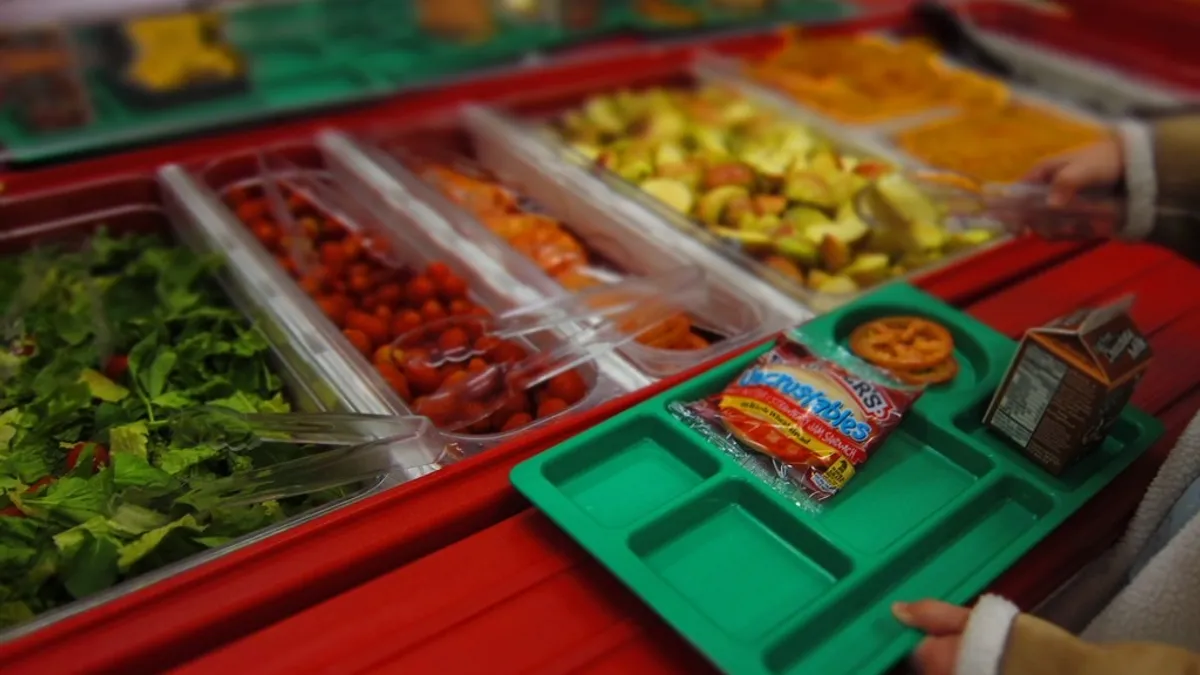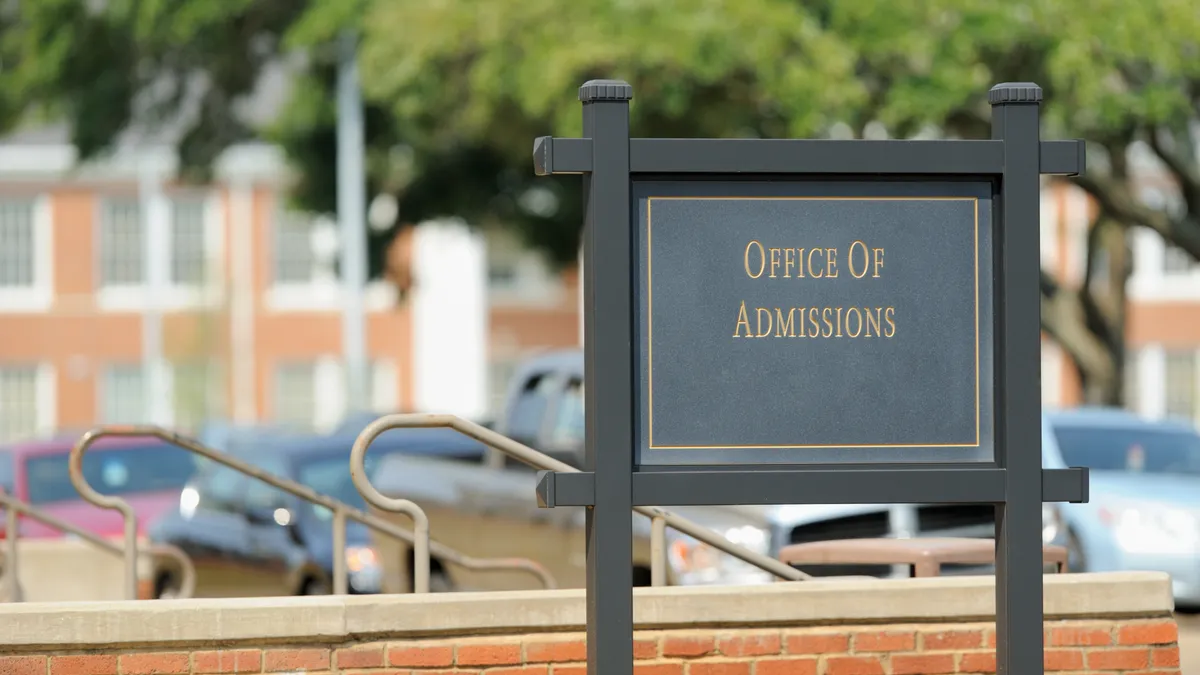Teachers in Cambridge, MA, used to notice children behaving aggressively or struggling to pay attention, labeling them as having behavior issues. Now, many of those teachers see these symptoms and recognize the underlying food insecurity that could be the root problem.
Almost all of the public schools in Cambridge participate in a weekend backpack program that sends home two breakfasts, two lunches and snacks with participating children on Fridays. The goal is to help get them through a weekend without access to school food.
The Cambridge Weekend Backpack Program, now operating under the umbrella of Food For Free, started during the 2012-13 school year as a strategy to address the problem of child hunger. Cambridge parent Alanna Mallon spearheaded the effort with the help of other volunteers and school administrators, ultimately joining Food For Free as a program director this past winter to work on the backpack program and other food initiatives full-time.
Over the last few years, Mallon has noticed consistent feedback from teachers responding to surveys about the impact of the program.
“It used to be on Fridays kids would be really nervous in the afternoons and really anxious and presenting more aggressively,” Mallon said. “That doesn’t happen anymore when kids are in the program.”
What’s more, school attendance rates have increased and teachers say students don’t need to see the school nurse as often.
By the time Cambridge Public Schools reopen for the 2016-17 school year, every single school will have a weekend backpack program and several will host markets where families can pick up fresh, healthy foods for free on a monthly basis.
The summer, however, marks a serious gap in Cambridge’s — and the nation’s — food safety net for children. There are 22 million students who receive free or reduced-price lunch in U.S. public schools and all but 3.9 million of them have lost access to those meals over the summer, according to data from Feeding America, the network of the country’s food banks. Whether it is because they can’t get to community summer meal sites or don’t know about them, more than 18 million children go hungry over the summer.
Child hunger receives a lot of attention because of the documented negative effects on cognitive development, behavior, and health. Yet, while students in the nation’s K-12 schools lose access to reliable food sources during the summer months, high school graduates lose access to school cafeterias year-round when they trade in their high school textbooks for college ones.
“While we address these issues in K-12 with a fairly robust safety net, we do not have that set-up for higher education,” said Sara Goldrick-Rab, director of the Wisconsin HOPE Lab and professor of higher education policy and sociology at Temple University.
Hunger in college
Students lose access to the National School Lunch Program and they have a hard time qualifying for food assistance programs through the federal government once they graduate from high school. The Wisconsin HOPE Lab surveyed 10 community colleges across the country in 2015, finding 20% of student respondents had gone entire days without eating a single meal. Campus surveys have found nearly 40% of undergraduate students in the City University of New York system are food insecure as well as 21% of students in the California State University and University of Hawaii systems.
Nationally, the problem of food insecurity touches every single county and more than 48 million people. Only a little more than half of these people qualify for SNAP benefits, which have income, asset, and work requirements. The annual income cutoff for SNAP benefits is 130% of the poverty line, or $15,444 for individuals and $31,590 for families of four. Able-bodied adults without any dependents must work 20 hours per week to qualify for SNAP, which limits access for many students.
But colleges are starting to pay attention. As of July 5, 2016, there were 339 active member institutions of the College and University Food Bank Alliance. Michigan State University’s Student Food Bank is said to be the first campus-based food pantry in the nation. It opened in 1993 and has continued to be run by students, serving more than 4,000 clients each year and distributing about 99,000 pounds of food.
The California State University system is working to coordinate efforts for its own support services. Faculty, staff, administrators, and students came together June 20-21 for the CSU Conference to Best Meet the Needs of Housing Displaced and Food Insecure Students. Participants hope to develop inter-campus partnerships and learn from each other’s strengths and weaknesses.
At Bunker Hill Community College near Boston, 8,000 of the school’s 14,000 students qualify for Pell Grants, and 1,000 qualify for SNAP benefits. The Single Stop program aims to help students overcome economic barriers that get in the way of their studies and break the cycle of poverty. Bunker Hill Community College President Pam Eddinger estimates 2,500 students access Single Stop services each year.
The college also hosts a mobile food pantry and gets daily donations from Panera bread. The company drops off two carts of bread every day and the Greater Boston Food Bank brings two tons of food once per month. Eddinger says two tons of food — more than the weight of a small car or an elephant — disappears within two hours, scooped up by hungry students on their way to class.
Eddinger recognizes the scale of the problem, but she is frustrated by her limitations in solving it. There is a stigma around seeking out resources that keeps some students from ever asking for help. The physical effects of hunger get in the way of student participation in their classes and extracurricular activities. And they contribute to low completion rates, Eddinger says.
“It’s not a problem of learning, not a problem of intellect,” Eddinger said. “It really is a problem of poverty and I’m finding that the work that I’m doing now is going to be hopeless without some policy changes in the system.”
Policy efforts
Goldrick-Rab is a proponent of a National School Lunch Program equivalent for college students. While it is far from ever being put into law, she said she did submit a proposal to a public official in the last year.
In the meantime, on the K-12 side, a bipartisan group of senators from Arkansas, Colorado, Kentucky, Illinois, Ohio and Indiana introduced the Hunger-Free Summer For Kids Act last August to give communities more flexibility for summer meals programs. Right now, to qualify for reimbursement from the U.S. Department of Agriculture, organizations have to run congregate sites, forcing children to travel to them. In rural areas this is particularly difficult, and in unsafe urban neighborhoods, many children cannot make it to the lunch sites on their own.
The proposed bill would amend the National School Lunch Act and create opportunities for communities to deliver packaged meals to families or distribute electronic benefit transfer cards to eligible children over the summer, allowing their families to buy extra food from retail stores.
At the state level, the legislature in California is considering the College Student Hunger Relief Act of 2016, which would help food banks coordinate with college food pantries and require both public and private colleges to participate in restaurant meals programs in their counties.
But as colleges begin to recognize the needs of their students, a culture shift would likely have to take place to create political will to fund a massive program aimed at college student hunger. After all, poor college students who survive on Ramen noodles are part of the romanticized image of how college is supposed to be.
Whether they are middle class students who have never experienced such hunger before or students from lower-income families who navigated the social safety net throughout their childhoods, hunger on campus is not romantic. The HOPE Lab study found 31% of black students and 23% of Latino students experienced the worst levels of food insecurity, along with 19% of their non-Hispanic white peers. Still, not everyone agrees it’s a problem.
“We normalize the idea that being a poor college student is cool,” Goldrick-Rab said. “These stereotypes work against our efforts to try to address these challenges.”
What's at stake
K-12 schools have long recognized how important it is to meet students’ basic needs before expecting them to perform academically. In addition to breakfast and lunch programs, weekend backpack programs, on-site food pantries, and summer meals programs, many schools connect families to community services for mental health, immigration help, tax preparation, substance abuse, and more.
When it comes to food, the federal government approved the National School Lunch Act in 1946 as a matter of national security, recognizing the importance of safeguarding the health and well-being of the nation’s children following World War II.
Children who don’t get enough food are at risk of chronic health conditions, and when they have limited access to healthy food, hunger can even lead to obesity. Kindergartners who show up to school for the first time after experiencing food insecurity in their first years of life are already likely to be cognitively, emotionally and physically behind their peers.
Cathy Mannen taught for 17 years, leaving the classroom at the beginning of 2016 for a position with the Illinois Federation of Teachers. Almost 60% of students in her former district, Champaign Unit 4 in central Illinois, were considered low-income during the 2014-15 school year. Even with the existing K-12 safety net, she saw symptoms of hunger in her classroom including fatigue, irritability, and anxiety among students. These, in turn, led to behavior problems in some students. And, at the elementary level, Mannen saw physical and developmental consequences when students didn't get regular meals or meals that were nutritious enough.
In her mind, the foundational issue is systemic poverty and the fact that schools cannot separate poverty from learning.
"There are a lot of effects of poverty that come into the classroom with our students and impact their ability to attend and focus and be fully engaged in school," Mannen said. "It's all inter-related."
Research confirms this. Student achievement is invariably tied to poverty. And only when basic survival needs are met can students afford to turn their attention to their studies, even when they know education is their best shot at a better life. Still, absent large-scale changes, teachers everywhere will have to press on, fighting to reach students who don't know where they'll eat next.







 Dive Awards
Dive Awards












